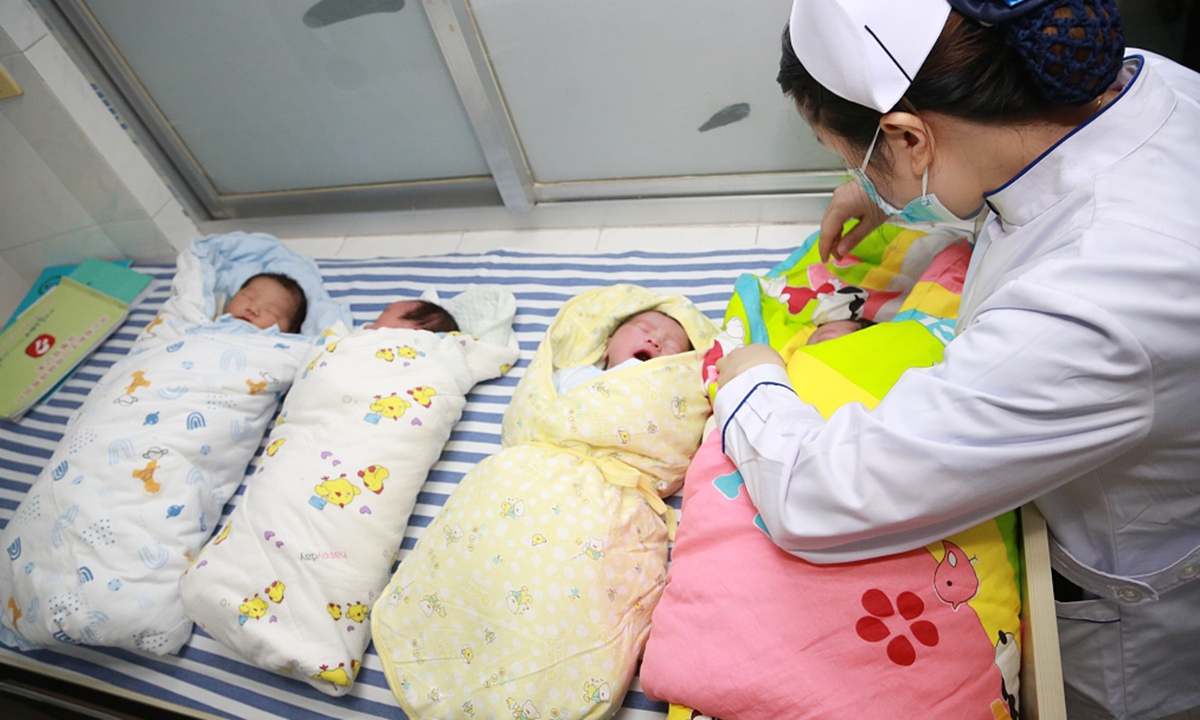Photo file: VCG
Low fertility and negative resident population growth have been in the spotlight in China recently, with the latest statistics showing that 16 of the country’s 34 provincial-level regions saw negative increases in their permanent population last year. .
Experts warn that China needs to prepare quickly for inevitable negative population growth and it will only be a matter of time before the trend spreads further. Although little impact will be seen in the short term, it will weigh on the Chinese workforce and the broader economy in the long term.
In an article posted on WeChat by the China Population Association, Yuan Xin, a professor at Nankai University’s School of Economics, said China’s negative population growth was inevitable. Low fertility rate has been ongoing in China for 30 years, and the inertia of positive population growth is about to be exhausted, Yuan said, adding that negative population growth will increase during the 14th plan. five-year (2021-2025).
“China will be the second major power in the world with negative population growth after Japan and the largest country with negative population growth. This trend will be an important aspect of the demographic situation that China will have to confront head-on in its economic future. and social development decisions,” Yuan said.
Negative population growth will have little impact on China’s socio-economic development in the short term, as the population will slowly decline in the first few years from a few hundred thousand to about one million per year, which is a very small percentage of the 1.4 billion Chinese. people, He Yafu, an independent demographer, told the Global Times on Tuesday.
However, in the long run, it will have a big impact on the Chinese economy. Such a trend, combined with an increasingly aging population, will weigh on the working population and the pressure on pension payments will also be much greater. In addition, prolonged negative population growth will weaken China’s demographic advantages and ultimately drag down the country’s economy.
Statistics for 2021 showed that nearly half of China’s provinces experienced negative permanent population growth, with China’s less-developed northeast region seeing most of the declines due to population out-migration and of a low fertility rate. Meanwhile, the eastern and southern coastal provinces, which are more economically developed, are attracting large numbers of migrant workers from the central and western parts of the country, experts said.
Among the 16 provinces with negative population growth, the top six are Henan, Heilongjiang, Yunnan, Liaoning, Jilin and Hunan. Fifteen other provinces recorded positive population growth, with Guangdong, Zhejiang, Jiangsu, Fujian and Guangxi recording the highest number of births.
“The vast uneven distribution of China’s population and development gaps between regions have left a lot of room for population flow. The flow is precisely the advantage of a large population, which is conducive to making the most of the demographic dividend,” Yuan noted.
However, he said that once the fertility rate and population size in most provinces decline, population migration will no longer be an effective means of coping with negative population growth, and this It is only a matter of time before this trend evolves from limited areas. to entire regions.
Yuan warned that population issues come with a time lag, and once issues erupt, the best time to respond and manage is often missed.
To reduce the impact of negative population growth, maintaining an adequate level of fertility is the basis, but the current policy incentives in China are far from sufficient, experts noted.
“The most direct way to increase the fertility rate is to introduce a policy of child care subsidies. Currently, only a few regions in China provide such subsidies and only until the child has 3 years. Some provinces, although they are planning to introduce child care subsidies, their implementation is still delayed,” he told the Global Times, adding that the child care subsidy children should be formulated centrally and be paid until the child reaches the age of 6 years.
China passed an amendment to the law in August 2021, which allows each couple to have three children and stipulates policies to support procreation in the face of the urgency and gravity of the development of the Chinese population plagued by declining fertility rates, shrinking labor force and increasing aging of the population. .
However, the third child policy should not be limited to the removal of restrictions on childbearing, but more to the design and implementation of support measures, experts have said.

